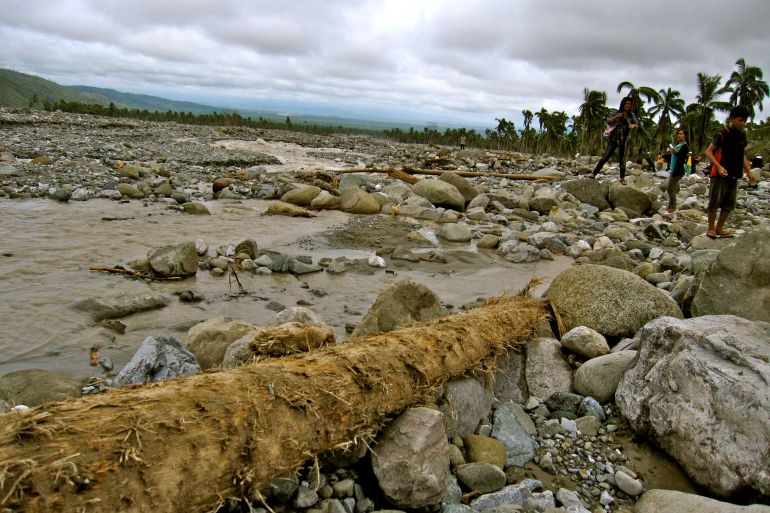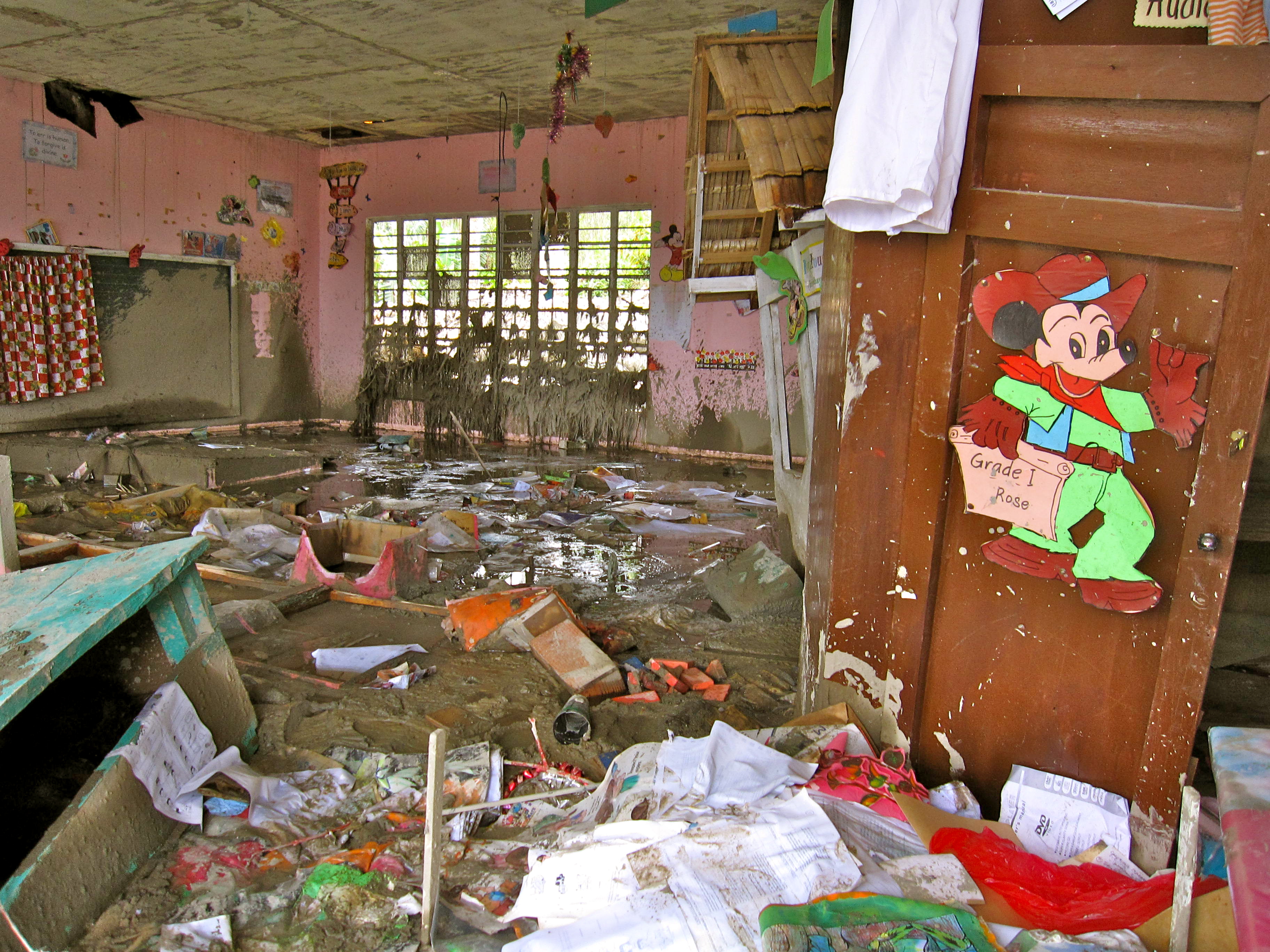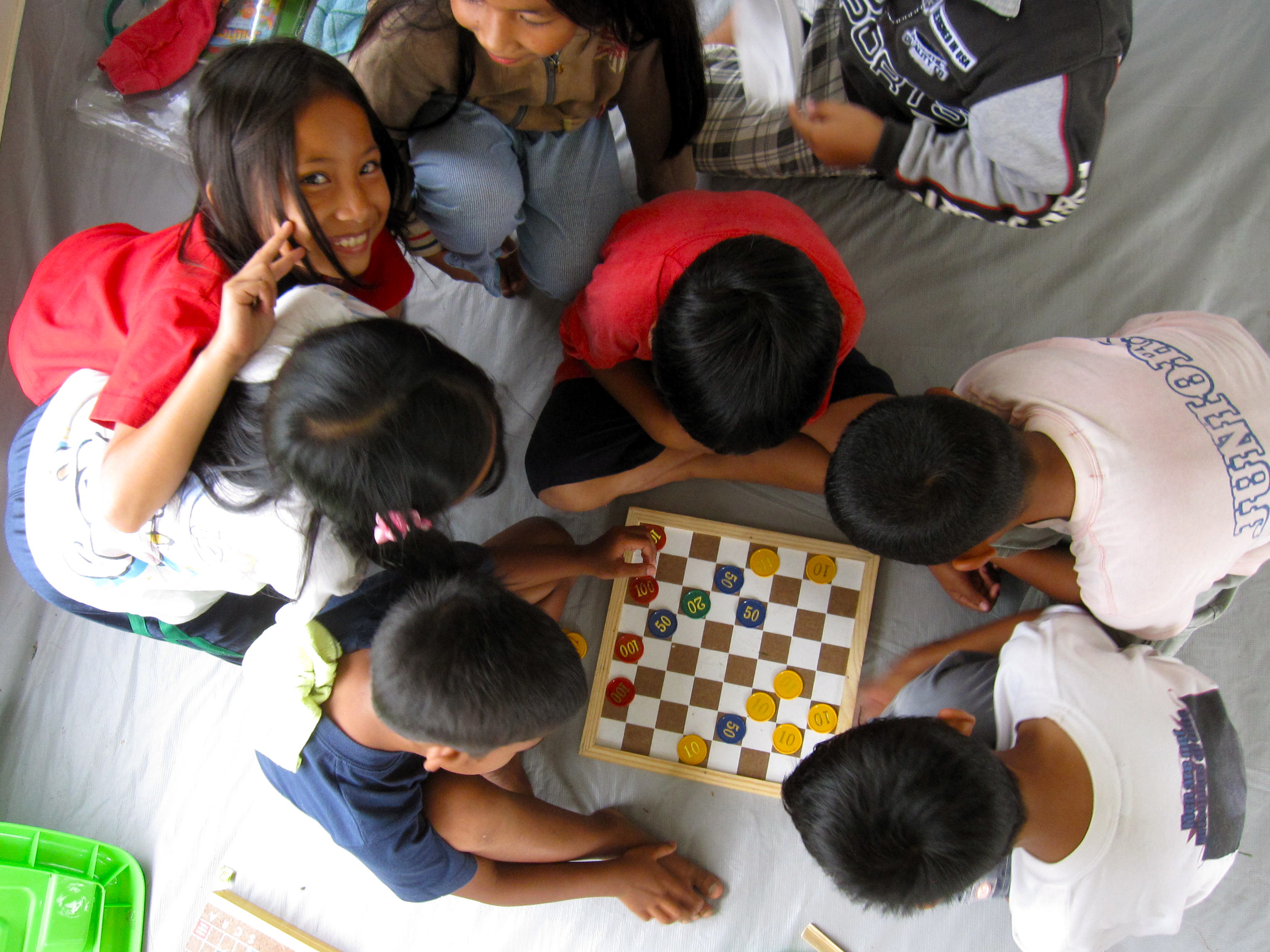Teachers await children after Typhoon Bopha
Aid agencies push to get children back to classes after powerful storm devastated schools and students alike.

Compostela Valley, Philippines – Maricel Loreniana sits at a student’s desk marking her classroom register, but there are no children here today. The classroom is empty, devoid of the usual noise and excitement that 41 ten-year old boys and girls bring.
Maricel has salvaged her class register, now dank and brown but with the names of her pupils still clearly visible. She is carefully copying the names to keep a record of their whereabouts, marking which ones she’s heard have moved, which ones have been displaced to evacuation centres, and which ones are still missing one month after Typhoon Bopha swept through her municipality of New Bataan in the Philippines’ Compostela Valley.
Keep reading
list of 4 items‘We share with rats’: Neglect, empty promises for S African hostel-dwellers
Thirty years waiting for a house: South Africa’s ‘backyard’ dwellers
Photos: Malnutrition threatens future Afghan generations
“I have had no contact with most of my students since the typhoon. Most have been displaced, some to evacuation centres too far away to attend school, while others have moved elsewhere with their families,” she said.
“So far, I know one of my students is missing, because he was my younger cousin. His two siblings and my uncle are all still missing. It’s been a month now and I still haven’t had news about them.”
At Cabinuangan elementary school where Maricel used to teach her fifth-grade class, 16 students are reported dead so far, with 17 still missing. With class records incomplete and so many families displaced, no one is sure of the actual number.
Maricel says things have been very difficult since the typhoon. “I was very, very scared that night. We didn’t know what to do when the storm started to close in.”
Maricel said she and her husband decided to leave their house in gushing, nearly waist-high waters after coconut trees in her garden fell through her roof and crushed the side of her concrete house.
 |
| Thick, smelly water fills what used to be school classrooms [Meena Bhandari/Al Jazeera] |
They found safety at a grandstand, where 20 members of Maricel’s extended family had also found shelter.
Teresita Canstra, another teacher at the same school, recounts: “There are so many stories here to tell. Everyone has had a terrible experience. I ran with no belongings, no shoes, nothing. I got to the sports grandstand and I saw dead bodies there. I saw everything that night.”
Washed away
Maricel’s uncle and cousins had been living in the nearby hamlet of Andap, which has been all but completely washed away. The village is buried under what looks like a riverbed of large heavy boulders and rocks. There is a Catholic chapel with a missing facade, although its intact altar is open for worship.
Much of the rest of the village has been completely flattened by a massive landslide triggered by the typhoon that bulldozed through the valley. All signs of Andap’s 400 residents were washed away, taking with them all testimony of their previous lives.
A group of young teenage boys, playing on a fallen coconut tree trunk, described the roar of the landslide. “At first we thought the crashing noise was the rain and thunder, but later we realised it was the sound of the stones and boulders crashing down the valley from the mountains. It was very loud and very scary.”
“I’m scared of the wind now, and I’m scared of the rain. I want my school back and my books,” one boy added.
The shell of a first-grade classroom is one of only 14 schoolrooms still standing at Andap’s elementary school. Christmas decorations still hang from the ceiling, and books with colourful cartoon characters float in thick, smelly, muddy water that has settled into the room, reaching as high as the base of the blackboard hanging on the wall.
The neighbouring classroom is now completely exposed, its walls washed away, strewn with boulders that destroyed the room’s concrete structures.
Total damage
Aid organisations across the affected provinces in Mindanao have been focusing on getting schools functioning again after the typhoon. With more than 600 schools and nearly 200 day care centres destroyed or damaged across the island, getting school up and running again is considered a life-saving strategy.
Children account for an estimated 42 percent of those affected by the typhoon, and classes are suspended in many areas with schools damaged, destroyed or used as living spaces.
An estimated 436,540 pre-schoolers and students have been affected by Typhoon Bopha in the four worst-hit provinces alone. Of those, about 169,750 elementary and high-school children have been displaced.
Typhoon Bopha struck the east coast of Mindanao island in the early hours of December 4 – one of the most destructive disasters ever to have hit the Philippines.
The total damage caused to infrastructure, housing and agriculture is estimated at more than $947m.
An estimated 6.2 million people have been affected, across 3,064 barangays (villages), and 34 provinces. 216,817 homes were destroyed or damaged, displacing 973,207 people. Yet only 1.4 percent of these people are in evacuation centres or camps, which has hampered relief efforts to reach those affected, even five weeks after the disaster struck.
Children have also lost school materials and books, and aid agencies say the stress of the disaster, loss, displacement, and economic and social vulnerability is likely to hurt children’s psychological wellbeing.
Back to school
UNICEF, Plan International, World Vision, and Save the Children say getting children back to school is as much a priority as providing access to safe drinking water, shelter and good nutrition.
 |
| Children account for an estimated 42 percent of those affected by the typhoon [Meena Bhandari/Al Jazeera] |
“Education saves lives in emergencies,” says Rhoewena Loreto, UNICEF’s education emergency coordinator. “Children need the rhythm of schooling and the space to interact with other children. The routine, stability, and structure of school helps give children and teachers hope for the future, which is critical for their psychosocial recovery,” she explained.
Carin van der Hor, the coutry director of Plan International, added that disasters disrupt education, making children “more likely to get involved in hazardous work; become vulnerable to the risks of trafficking and early marriage; and later on be forced to drop out from school. When a child is in a safe learning environment, he or she is less likely to be exposed to these risks.”
Aid agencies in conjunction with local groups, have been working with the Philippines’ government to set up temporary learning spaces for children. These spaces are providing training sessions for teachers like Maricel in how to deal with the profound stress their students have experienced.
“Until the children here are ready for lessons, we all sing, we dance and we play to help us through our experiences. Being a teacher again means simply that I can practice my profession with my learners. Only five of my original students come to the UNICEF tent. I hope the others come back soon,” says Maricel.
Meena Bhandari wrote this article on a trip to the Philippines facilitated by UNICEF.